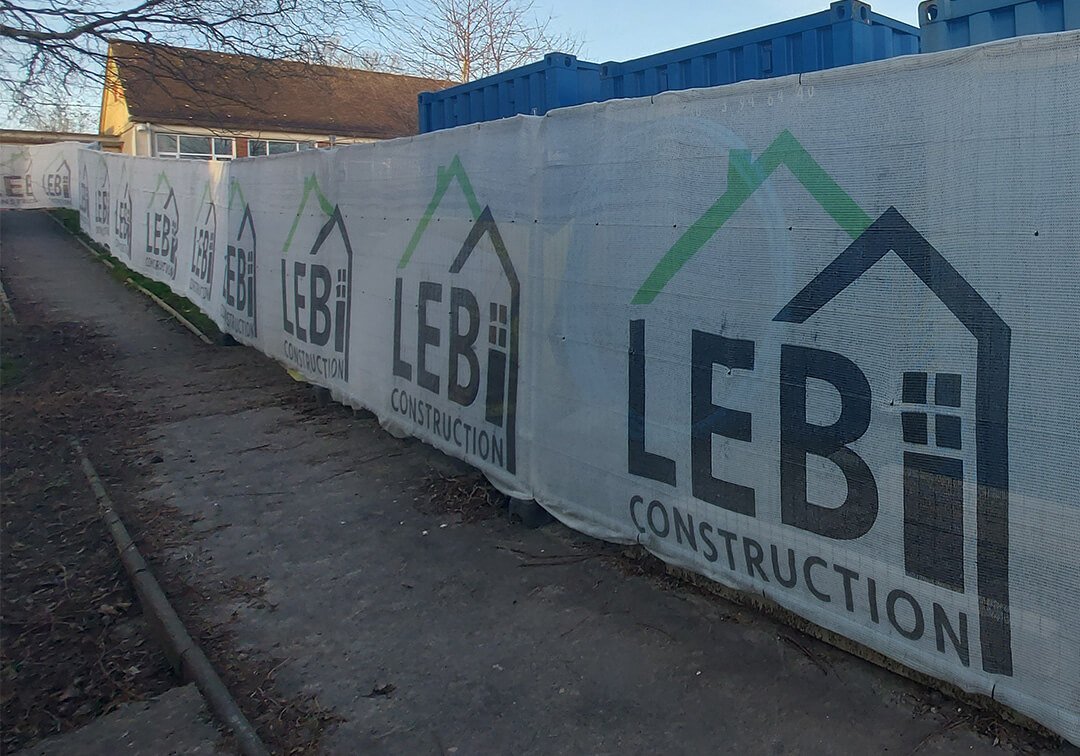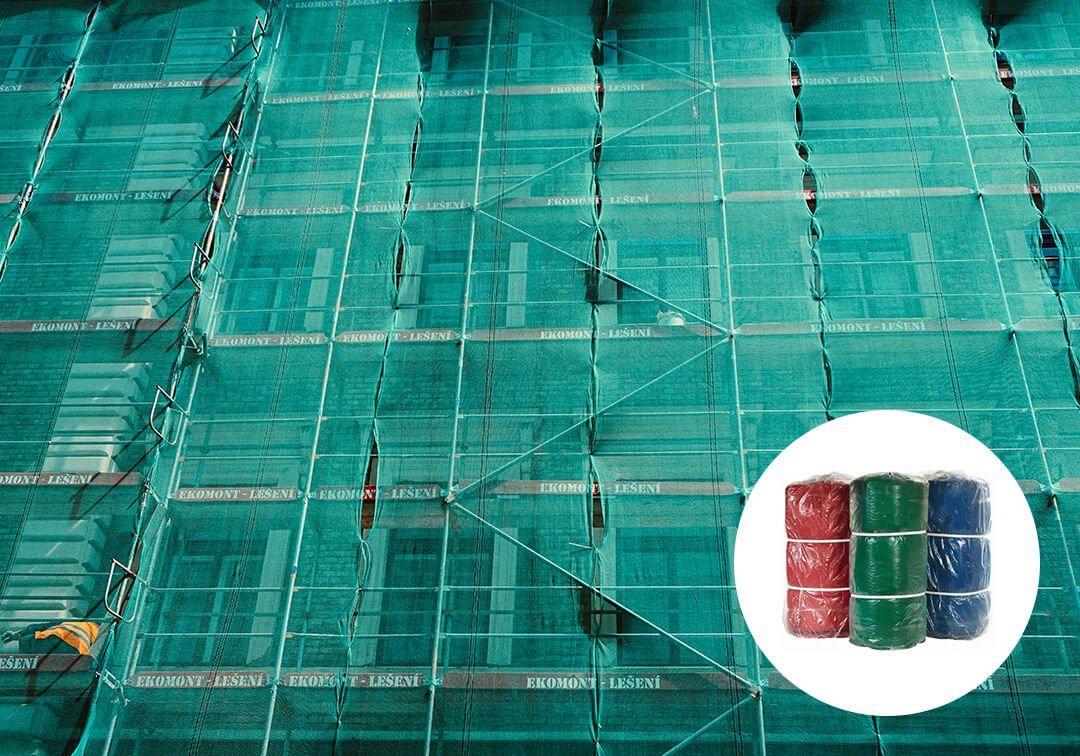Debris Netting
Shop debris netting to protect traffic and passersby from building site debris. Commonly used as fence or scaffold netting, debris mesh is available plain or custom printed in a range of colours and sizes. Strong and air-permeable, scaffold debris netting is sure to prevent falling debris whilst protecting your project and workers from adverse weather conditions.
Read MoreWhat is Debris Netting
Debris netting is a plastic netting made from Polyethylene. Debris netting is often used as scaffold netting or construction netting for Heras fences to protect traffic and passers-by from falling debris. Additionally debris mesh helps protect your site and workers from sunshine, wind and rain. Debris netting is available custom printed to advertise your brand or plain in a range of colours. Mesh netting has also gained popularity for protecting crops or ponds from pests and predators.
Why do they put netting on scaffolding?
Debris netting is used around the outside of scaffolding to safely contain any falling debris. Scaffold netting can hang horizontally or vertically to provide the best coverage for your site. Here are the four key benefits of using debris mesh for scaffolding netting:
- Protect passers-by from falling site debris
- Reduces wind or rain penetration for your site and workers
- Allows better air circulation to help reduce wind loading on your scaffolding
- Provides shading in bright sunlight whilst allowing enough light in to complete tasks
What size is scaffold netting?
The size of scaffold netting is dependent on whether you choose plain or custom printed debris netting.
Plain debris netting is available in 2 x 50 metre rolls while printed debris netting is available in the widths and sizes below:
- Widths – 1.75, 2, 2.6 or 3.1 metre
- Lengths – 25, 50 or 100 metre
If you’re looking for custom sized scaffold or Heras debris netting, check out our building wraps.
Can you order debris netting for individual panels?
Unfortunately you can’t order Heras debris netting for individual fence panels. As debris netting is sold in set sizes, Heras fence covers or HDPE fence tarpaulins are better alternatives to cover individual fence panels.
Can you order debris netting in custom heights?
Debris netting is made in rolls of set sizes meaning you can’t choose custom heights or widths. If you have a certain size in mind, checkout our building wraps or get in touch for advice on what the best option is for you.
What is debris netting made of?
Debris netting is made from knitted UV stabilised high density Polyethylene (HDPE). Custom printed debris netting is 50gsm with plain mesh netting is slightly thicker, weighing 60gsm. Scaffold debris netting features an open mesh that allows wind to pass through to prevent wind loading on fences or scaffolding structures.
Plain or printed debris netting?
When choosing plain or printed scaffold debris netting, there are two questions to consider:
1. Do you want to advertise on your scaffold or fences?
Scaffolding and Heras fences are often a great place to advertise your project or brand to passers-by. With custom printed debris netting, you can print your chosen design on white debris netting. Plus, we offer free artwork and design support should you need it.
2. What is your budget?
If you’re on a tight budget, plain debris netting is a cost-effective option to simply catch building site debris. Choose red, green, blue or black debris netting to add some colour to your fence or scaffolding.
Can debris netting be printed any colour?
Plain debris netting is available in red, green, blue or black. With custom debris netting, you can print your design or logo on white debris netting, a popular option for our fence and scaffolding netting.
Is debris netting fire retardant?
Due to the material & structure of high density Polyethylene, debris netting is not fire retardant. If you’re looking for B1 fire rated builders netting, head over to our building wraps page.
Is debris netting hemmed and eyeleted?
Debris netting is produced in rolls of material meaning it doesn’t come hemmed and eyeleted. However, it’s still easy to install, using tie wraps through the open mesh material to hold in place.
Building wraps come with eyelets and are often reinforced with Keder hems for large scaffolding wraps.
How do you install debris netting?
Debris netting is simple to install. Follow the three steps below for a secure fit for your scaffold safety netting:
1. Secure one end of your debris netting to the outside of your scaffold and attach using cable ties
2. Wrap the netting around the perimeter of your scaffolding, securing with cable ties every metre for a secure fit
3. Ensure all knots and cable ties are secure so your netting won’t come loose in high winds
4. Trim any excess netting so your scaffold debris netting looks neat and tidy
To attach debris netting to Heras fencing, follow a similar procedure as above. Fix your debris mesh to one end of your fencing and work down the perimeter of your Heras fencing using cable ties every metre.
How long does debris netting last?
The lifespan of your debris netting depends on the two factors below:
1. How much wear and tear it is exposed to
If your debris netting is to be used for long-term projects with lots of falling debris and poor weather conditions, it’s likely you’ll have to renew your builders netting sooner. If your scaffolding netting tears or gets damaged due to falling debris, it will need replacing immediately.
2. How well it is looked after
If your debris netting is poorly installed or not cared for properly, the lifespan of your scaffold netting is likely to decrease. Check out the care tips below to keep your debris netting in great condition.
How to look after debris netting
To properly look after your scaffold netting or debris fence netting, you should regularly inspect your mesh netting for:
- Incorrect installation
- Cuts or tears
- Heat or friction damage
- Stitching defects or damage
- Worn or damage fittings or cable ties
- Dirt or debris sat in the netting
If you spot any of these then you should remove, repair or replace your debris netting.
What is debris netting wind loading?
Wind loading is the amount of pressure a structure faces due to windy conditions. When building scaffolding, ensuring wind protection helps keep your structure, staff and passers-by safe.
Our debris netting allows 70% of wind to pass through the material significantly reducing the amount of wind loading on your scaffolding or fencing.
Does scaffold netting stop rain?
Scaffolding debris netting helps prevent a lot of wind and rain penetration, helping keep your site and workers dry. However, debris netting does feature an open mesh structure so a small amount of wind and rain is to be expected.
If you need any free artwork support or have any questions about debris netting, don’t hesitate to call or email us.
Large format printing made easy
FREE DELIVERY
Free delivery on most orders over £250! Standard lead time is just 7 working days with an Express Service available on request.
FAIR PRICES
We offer some of the best prices in the UK, backed by our 10% Price Beat Guarantee. Plus, enjoy bulk discounts and exclusive trade rates for resellers.

EASY ORDERING
We offer a personal, friendly service to every customer. Simply browse our products online, then call or email us to place your order. We're always happy to help and advise.
FREE DESIGN SERVICE
No artwork? No problem. Our in-house design team can create custom artwork to match your brief, completely free and with no obligation.








